Pressure systems generally have a consistently high safety record. However, the unique dangers they present due to their ability to release large amounts of energy and fluid following leaks or explosions, means that it is extremely important for companies to ensure that their pressure systems are compliant.
Due to the complexity of the Pressure Systems Safety Regulations (2000), wholly understanding how to be compliant can sometimes be a difficult and confusing task. For those faced with being the duty holder of their pressure systems, it can be extremely frustrating.
That’s why we have listed everything you need to be aware of to be fully compliant with the Pressure Systems Safety Regulations (2000), from what the regulations are to how examinations are structured. With this information, you can ensure compliance with legislation and never be bewildered by legal jargon again.
The Pressure Systems Safety Regulations (2000) is the health and safety regulation for pressure systems containing “relevant fluids” within the workplace. These “relevant fluids” refer to: Steam, any fluid or mixture which is at a pressure >0.5 bar above atmospheric and a gas dissolved under pressure in a solvent.
The regulations fall under the general Health and Safety at Work etc Act (1974), and are in place to prevent serious injury from the hazard of stored energy as a result of the failure of a pressure system or one of its component parts.
The Pressure Systems Safety Regulations (2000) require that all pressure systems are designed and manufactured from suitable materials for the liquids and gases they will be holding. When these systems are installed, they must be suitable for the intended purpose and installed correctly, as well as made safe for operation.
Regular maintenance is also required under the Pressure Systems Safety Regulations, as well as regular formal examinations at specified time periods. The regulations state that during examination, all qualifying pressure systems must have a “Written Scheme of Examination” produced by a “competent person”.
Pressure systems are defined by the HSE Approved Code of Practice under the PSSR as:
Any systems comprising of one or more pressure vessels of rigid construction, as well as any associated pipework and protective devices.
The pipework with its protective devices to which a transportable pressure receptacle is, or is intended to be connected.
A pipeline and its protective devices, which are designed to protect the pressure system against system failure.
The guidelines divide pressure systems into three categories: minor, intermediate and major. While there is no clear difference in practice between these categories, they provide an indication of the range of systems covered by the Pressure Systems Safety Regulations (2000) and the different competencies required for each one. Here is an overview of these three pressure system categories:
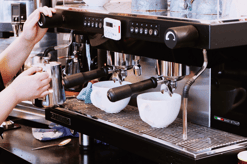
include those containing steam, pressurised hot water, compressed air, inert gases or fluorocarbon refrigerant. These are small and present few engineering problems. Pipelines are not included in this category.
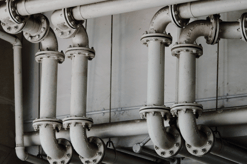
include most storage systems and process systems that do not fall under either of the other categories. Pipelines are included, unless they fall into the major system category.
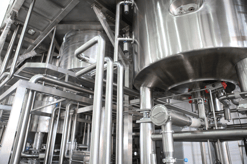
include pressure systems with large, complex and hazardous contents that require the highest level of expertise to inspect and examine. Pipelines are included if the pressure-volume product is greater than 105 bar litres.
Any pressure system you own that falls into any of these categories will therefore need to be subjected to regular formal testing. The types of inspections needed will vary from different pressure systems, and this will be covered in your WSE (Written Scheme of Examination). These inspections should again be conducted by a “competent person”, and the WSE should be followed exactly.
Some examples of pressure systems that require inspection under the Pressure Systems Safety Regulations 2000 include:
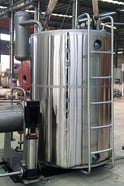
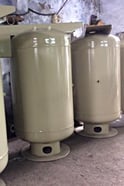
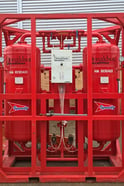
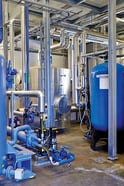
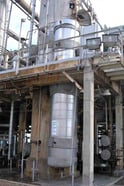
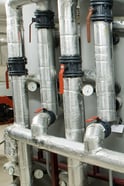
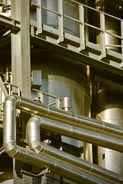
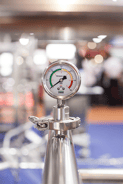
Under the Health and Safety at Work etc Act (1974), it is an employer’s legal responsibility to provide a safe working environment and the Pressure Systems Safety Regulations 2000 fall under this requirement. Therefore, if you are a user or duty holder of a pressure system, the regulations apply to you.
However, compliance with the Pressure Systems Safety Regulations 2000 is not just a tick box exercise - pressure systems can be a serious safety concern, so duty holders have a number of responsibilities to ensure that the potential for danger is reduced. The legislation guide covers these responsibilities in full, but, in general terms a duty holder must:
This means ensuring that the right materials are being used in the manufacturing and designing process and that any modifications or repairs are being carried out properly and recorded.
This includes knowing the characteristics of the relevant fluid in the pressure system and the safe operating limits of the equipment.
Devices such as safety valves, bursting discs and electronic appliances should all be adjusted to their correct settings and in good working order at all times.
You should have a whole-system maintenance programme that considers all factors that could affect the lifecycle of a pressure system such as age, what it is used for and the environment in which it is operated.
You should ensure that anybody who operates, installs, maintains, repairs, inspects or tests pressure equipment has the necessary skills and knowledge to do their job safely through delivering appropriate training. You should also include refresher training.
This is a requirement under the Pressure Systems Safety Regulations 2000 and it includes the production of a written scheme of examination (WSE), to be used by a competent person to carry out the examination.
For both the duty holder and the inspector, you should choose people based on the necessary knowledge, skills and, importantly, independence they have to perform their role and responsibilities effectively.
The consequences of not being compliant with the Pressure Systems Safety Regulations 2000 are immense, as any leaks in a compressed gas or steam system could lead to an explosion, with even a small air receiver potentially causing serious and fatal accidents if it were to explode.
Don’t let this happen to your business - know your legal responsibilities.
A WSE, or Written Scheme of Examination, is an official document written by a company with a “competent person” which outlines the details of the pressure system and the inspection process. It can be altered in order to keep up with any changes in pressure systems to make sure that they are safe, but all future inspections are legally required to follow the document.
To draw up a WSE, look around your workplace and decide which items of plant or equipment operate under pressure and form a pressure system. Before using any kind of pressure equipment (new or old), a written scheme of examination must be written. PSSR regulation 8 places a duty on the user of an installed system and the owner of a mobile system not to allow pressure systems to be used until they have a WSE mapped out and an inspection completed.
1. A description of each part of a system being examined, including all protective devices, every pressure vessel and every pipeline & pipework in which a defect could be dangerous
2. An identification of the system: identification numbers or descriptions
3. The type of examination required, including the testing to be carried out on any protective devices
4. The necessary work needed to allow the system(s) to be examined safely, such as cooling down periods and isolation procedures
5. The time allowed between examinations
6. Parts of the system which, if changed or repaired, should be re-examined before the system is used again
7. The name of the competent person verifying the WSE
8. The date of the certificate.

The definition of “competent” is a subjective one. In the context of compliance, a “competent person” is generally defined as someone who has appropriate and practical industry knowledge, as well as relevant experience of the area or equipment they are assessing in order for them to find faults or weaknesses.
An important thing to remember is that the “competent person” must be independent and impartial to ensure that fair decisions are made that do not compromise safety.
This is where it can confusing - being “competent” does not necessarily mean someone who has worked in the area, or with the equipment for a long time. According to HSE guidelines, the “competent person” must have appropriate industry knowledge, as well as being fully independent.
Under HSE guidelines, the responsibilities of a competent person under the Pressure Systems Safety Regulations 2000 are as follows:
Pressure systems are highly dangerous and if an explosion occurs, it could cause serious injury and even death. Because of this, if companies are found to be non-compliant with the Pressure Systems Safety Regulations (2000), HSE will subject them to serious sanctions, from huge fines to prosecution - Therefore, it's essential to make sure that your inspector is competent and compliant.
When it comes to the examination of pressure systems, the competent person carrying out examinations under a WSE does not necessarily need to be the same one who certifies the scheme as suitable, which means you can change your inspection body.
It can be beneficial for companies to use a new inspection provider, because they may offer a new perspective and skill set that could improve your overall compliance.
These are just some of the factors you need to consider when choosing an inspection supplier for your pressure systems.
Check the inspecting body have Technical CVs, which focuses on the person’s experience, qualifications and skills within that particular job function. You should also check they have operating licenses and accreditations to perform thorough examinations.
Check they have the relevant health and safety qualifications which could include a NEBOSH/IOSH Certificate, a FAS Passport (EIRE), SAFed Health & Safety Passport, or any other recognised formal Health & Safety Passports.
Research their other services to see if they demonstrate experience and knowledge throughout different industry sectors.
In an industry where equipment used everyday has the potential to cause serious damage if not maintained properly, you need a competent inspection supplier who is able to examine your equipment to an excellent standard with minimal disruption to day-to-day business.
With Lloyds British, you not only gain assured competence and compliance, but peace of mind.
For over 200 years Lloyds British’s expertise in PSSR requirements has been helping businesses across various industries, by providing inspection services on the full scope of equipment covered by PSSR, as well as independent testing of pressure equipment.
Our long list of accreditations and memberships is your guarantee that we deliver our services efficiently, effectively and in line with the Pressure Systems Safety Regulations 2000, health and safety standards and industry best practices.
If you require assistance with your pressure equipment inspection requirements, contact our industry experts today.